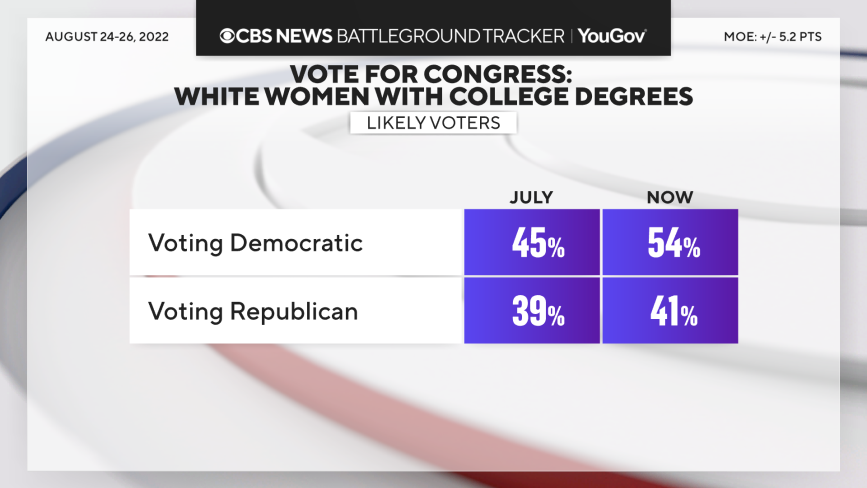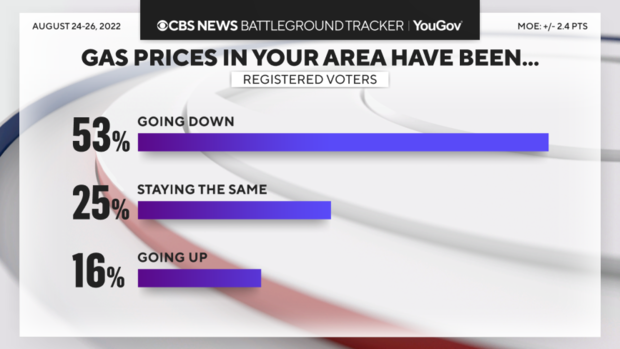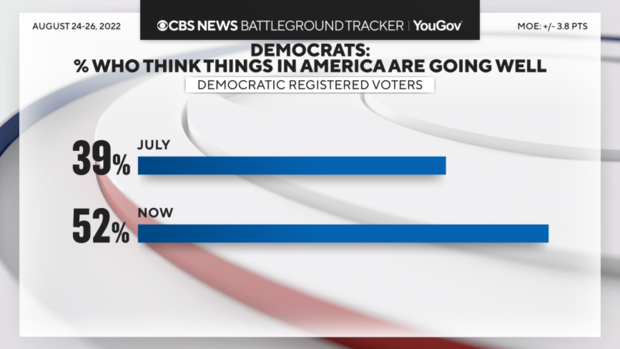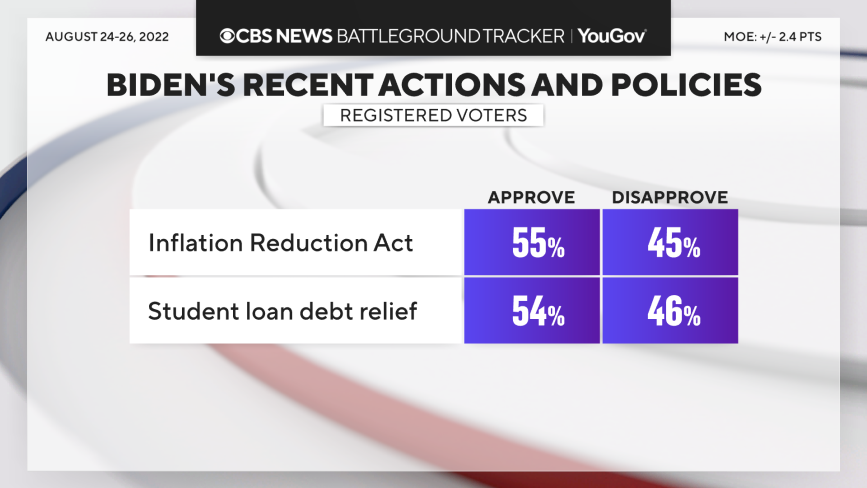Rabu, 31 Agustus 2022
K.K.K. Plaque Hangs Above Entrance to West Point Science Hall - The New York Times

A special congressional commission that recommends the removal of Confederate symbols at U.S. military sites flagged the bronze plaque in a new report.
For decades, the students at the U.S. Military Academy at West Point in New York have walked beneath a panel of three bronze plaques mounted at the entrance of Bartlett Hall Science Center that includes an image of a hooded figure and the words “Ku Klux Klan” written below it, according to findings in a report released by a congressional panel on Monday.
The report from the panel, the Naming Commission, which was created by Congress last year and tasked with providing recommendations for the removal or renaming of Defense Department assets that commemorate the Confederacy, included multiple suggestions regarding paintings, statues and other items at West Point as well as at the U.S. Naval Academy in Annapolis, Md.
But the commission said that recommending the removal of the plaque fell outside of its scope because the Ku Klux Klan, founded by former Confederate soldiers, emerged after the Civil War. The panel flagged the item for review in its report, and included a picture.
A spokeswoman for West Point said the academy was reviewing the recommendations made by the panel and would collaborate with the Defense Department and the U.S. Army to implement the approved changes.
“As a values-based institution, we are fully committed to creating a climate where everyone is treated with dignity and respect,” she said in an email.
“The reason that we put that in there was because we thought it was wrong,” said Ty Seidule, a retired brigadier general who serves as vice chair of the commission, referring to the flagging of the K.K.K. plaque in the report. “When we find something that’s wrong, but it’s not within our remit, we wanted to tell the secretary of defense about that.”
“It was shocking for most people to see the image,” said Aundrea L. Matthews, a former arts director at West Point and president of the Buffalo Soldiers Association of West Point, adding that people questioned why the plaque was on the campus because, in her view, it was deeply at odds with West Point’s present-day reality.
Dr. Matthews said that people at West Point had long discussed the plaque and its origins, which remain unclear, but that she also did not want it to overshadow the academy’s strides toward diversity and inclusion.
Last year, she said, West Point unveiled a monumental statue of a Black soldier astride a stallion — a tribute to the famed Black cavalry called the Buffalo Soldiers — in the likeness of Dr. Matthews’s grandfather, Sgt. Sanders Matthews.
The other two plaques above the entrance to the science hall specifically commemorate Confederate figures, including Robert E. Lee and J.E.B. Stuart, the commission found. They were recommended to be modified or removed.
General Seidule, who is also a professor emeritus of military history at West Point and teaches a course on the Civil War at Hamilton College, wrote a book last year trying to understand why the Military Academy still displayed a portrait of Lee, who graduated from West Point but resigned his Army commission to fight with the Confederacy. The commission unanimously recommended that the portrait of Lee, in Confederate uniform and displayed in Jefferson Hall Library, be modified or removed.
The Naming Commission, established by the National Defense Authorization Act of 2021 following a national outcry over the killing of George Floyd by the Minneapolis police in 2020, suggested new names last year for nine Army bases that honor Confederate officers. That effort led to the renaming of a street in New York City’s only Army post after a Black officer who died saving other soldiers in Vietnam.
The commission’s first report, released earlier this month, focused on Army bases. A third report, due before Oct. 1, will include recommendations for all remaining Department of Defense assets. The secretary of defense has until Jan. 1, 2024, to implement a plan submitted by the commission.
The commission recommended several monuments, portraits and engraved images that depicted Confederate officers to be removed, relocated, renamed or modified at West Point and the Naval Academy.
The cost estimates to implement the changes at West Point ranged from $1,000, for modifications, to $300,000 for the removal of monuments and engravings at Reconciliation Plaza, which was built in 2001.
Before making its recommendations in its recent reports, the commission examined an inventory, created by the Department of Defense, listing assets throughout the country that were named after Confederate officers or that contained images depicting Confederate officers, General Seidule said.
Senator Kirsten Gillibrand of New York, who co-sponsored a measure that would require the secretary of defense to remove anything that commemorates the Confederacy, said she would work to ensure that Defense Secretary Lloyd J. Austin III implements the commission’s recommendations.
“I am supportive of the findings in the report and will continue working with the Naming Commission and D.O.D. to remove these harmful tributes that uphold the legacy of Confederate leaders who killed thousands of American service members in order to preserve the institution of slavery,” she said in an email. “It’s a disgrace and damaging to our nation.”
Representative Sean Patrick Maloney of New York, whose district covers West Point, and who wrote a letter in 2020 to then-Defense Secretary Mark T. Esper arguing for the renaming of military buildings and facilities with Confederate names, said he supported the commission’s unanimous recommendations.
“We cannot allow bigotry of the past to be perpetuated and celebrated in the same halls that educate our leaders of the future,” he said in an email. “It is essential that West Point’s campus and culture be one that is welcoming to students of all backgrounds.”
Susan C. Beachy contributed research.
from U.S. - Latest - Google News https://ift.tt/YoMJkvR
via IFTTT
Selasa, 30 Agustus 2022
Former Soviet leader Mikhail Gorbachev dies - Axios

Mikhail Gorbachev, who attempted bold reforms upon assuming leadership of the Soviet Union in 1985 and oversaw its dissolution in 1991, died at 91 on Tuesday, according to Russian state media.
The big picture: Gorbachev sought to modernize the economy and liberalize society through his trademark policies of perestroika and glasnost. He also improved relations with the West and signed arms control agreements with the U.S. But it was under his tenure that the Eastern Bloc, and later the USSR itself, collapsed.
- Gorbachev was awarded the Nobel Peace Prize in 1990 and is often seen as an admirable or even heroic figure in the West, in large part because he allowed the Soviet sphere to break apart peacefully.
- But in Russia his legacy is more complex, particularly for those like President Vladimir Putin who view the USSR's collapse as a profound tragedy. Gorbachev ran for president in 1996 and won less than 1% of the vote.
- Russian state media quoted the Central Clinical Hospital as saying that Gorbachev "died this evening after a serious and long illness."
Flashback: Gorbachev became General Secretary of the Communist Party at age 54, bringing a new dynamism to the Kremlin after a period of stagnation under a succession of aging leaders.
- But over time it became clear that the reforms he unleashed had developed a momentum of their own. There were growing demands for democracy and self-determination in the streets, and vicious infighting inside the Soviet power centers.
- Gorbachev survived a coup attempt in August 1991, but by then his authority was crumbling. He resigned Dec. 25 that year, after which 15 independent states replaced a defunct superpower.
The bottom line: Gorbachev had no idea the events he helped set in motion would end with the country he led ceasing to exist. Still, he is often described as one of the most significant political leaders of the second half of the 20th century.
from U.S. - Latest - Google News https://ift.tt/k1PntsV
via IFTTT
History Center to collect recipes for keepsake cookbook - Southernminn.com
[unable to retrieve full-text content]
History Center to collect recipes for keepsake cookbook Southernminn.comfrom "recipes" - Google News https://ift.tt/uRYf4ZT
via IFTTT
Montana Team Nutrition creates six new recipes to comes to schools across the state - KBZK News

Montana Team Nutrition has worked alongside MSU to create some tasty new recipes that will come to schools across the state. Molly Stenberg of Team Nutrition spoke with us about her excitement over the new recipes.
“We developed six recipes over a two-year period and it was all funded through a USDA Team Nutrition grant,” says Stenberg.
The recipes are made with fresh local ingredients such as barley, bison, beets, cherries, and lentils. The recipes are cooked with such ingredients to emphasize the importance of eating locally. These recipes were chosen from a statewide contest and were submitted by school service directors or family consumer science teachers. Several schools even got to test out the meals.
“Six schools tested the recipes for us so they taste tested the recipes with students and to make a cut," says Stenberg, "They had to reach 85% Student approval rating, which is pretty high. So we know that 85% of students liked the recipes.”
The USDA wants to make sure kids are eating healthy in school. Nutrition was a very important factor in creating these recipes. The Commercial Chef in charge of making these recipes large enough to serve in schools, Leah Smutko, spoke with us about the recipes' nutrition quality and quantity within schools.
“USDA is pretty strict about how nutrition quality or nutrition quantities are in the rest of us. So they want to know that when you're feeding kids and students what the nutritional value of it is," says Smutko, “...down to the protein level or the oils. I really got to work with Molly a bit and say, hey, the amount of oil you have in this is just going to burn. You really need more so let's go back through and kind of reevaluate nutrition.”
Molly Stenberg is hopeful for these recipes to make their debut in schools this fall.
“October is Farm to School month so that would be a perfect month first for schools to prepare some of these recipes," says Stenberg.
Team Nutrition believes it is important for kids to know where their food is coming from and realize the importance of agriculture in the state of Montana.
“I think overall schools in Montana welcoming in local ingredients is a success in itself,” says Smutko.
from "recipes" - Google News https://ift.tt/ZpviLgb
via IFTTT
Greenland ice losses set to raise global sea levels by nearly a foot, new research shows - CNN
(CNN)Widespread ice losses from Greenland have locked in nearly a foot of global sea level rise that's set to come in the near future -- and new research suggests there is no way to stop it, even if the world stopped releasing planet-heating emissions today.

JUST WATCHED
Why these billionaires are funding a massive treasure hunt in Greenland
MUST WATCH
CNN's René Marsh and Angela Fritz contributed to this report.
from U.S. - Latest - Google News https://ift.tt/Lvfh2rk
via IFTTT
1 dead, 2 injured after masonry column collapses at Lewis and Clark College campus - Fox 12 Oregon
/cloudfront-us-east-1.images.arcpublishing.com/gray/Q4FUWJRB65CMTHKELBQ6LDHDGQ.jpg)
PORTLAND Ore. (KPTV) – One person has died and two others were injured Monday night when a brick column collapsed at Lewis & Clark College, according to Portland Fire & Rescue.
Just after 8:15 p.m., crews were called out to the reflecting pool at the college campus in the 600 block of South Palatine Hill Road. PF&R said witnesses reported six people were in three hammocks when the masonry column fell inward toward the people.
PF&R said a 19-year-old man died and two 18-year-old women were injured. One of the women had injuries to an arm, while the other had abdominal injuries. Both were taken to an area hospital for treatment. The name of the man who died has not been released.
Monday was the first day of class on campus for Lewis & Clark College students.
Lewis & Clark College posted a statement to their website Monday, saying:
“We are devastated to report that earlier this evening, a tragic accident occurred on the undergraduate campus in which one of our students was killed and two others were injured. We are working to contact the students’ families and will report more information as it becomes available. We are deeply saddened by the shocking loss of a member of our community.”
No additional details about the collapse and the investigation have been released at this time.
Copyright 2022 KPTV-KPDX. All rights reserved.
from U.S. - Latest - Google News https://ift.tt/dwJMmQR
via IFTTT
Minggu, 28 Agustus 2022
In Flooded Kentucky, Schools Race to Rebuild - The New York Times
COMBS, Ky. — Robin Combs has been teaching math for more than three decades, muscle memory guiding her as she reaches for the right lesson plans, confident in what works and how best to reach her middle school students. But when floodwaters surged through Robinson Elementary School last month, the roof collapsed on her classroom and three decades’ worth of curriculum materials were destroyed.
Now, like dozens of her colleagues, Ms. Combs finds herself starting over. On a recent Friday, she was among a handful of teachers cobbling together donated supplies and cleaning out a former elementary school that will now serve teachers and students from two schools wrecked by the floods. Though her own family had running water for just one day in just over three weeks, she was focused on ensuring that her school would reopen by early September.
“I just want our kids back together and for eight hours a day, be normal — just normal,” Ms. Combs said. “They’re cool, they’ve got a seat, they’ve got food. I don’t have to worry for eight hours a day.”
This school year was supposed to mark the return of long-awaited normal, after two years in which the coronavirus pandemic cut classes short and, for a time, forced students and teachers online. But just as custodians finished polishing the tile floors and teachers began laying out the new supplies, floodwaters surged through eastern Kentucky, sweeping away the Chromebooks and covering decades of class pictures in mud and mildew. At least 39 people died in the floods, including a few children and a beloved school custodian.
Perry County, where Ms. Combs works, was among the hardest hit communities. Nearly a month later, the roadsides across eastern Kentucky are piled high with ruined possessions, tree limbs and the siding from damaged houses. Residents are tearing down destroyed buildings, carting away debris and scrubbing the musty stench of the flood from their homes. Some parts of the region must still boil water or are without stable electricity and internet. Officials and volunteers are still struggling to reach some missing residents in the narrow mountain valleys where the lone road that served as a point of entry has been blocked or washed away by the nearby creek.
At the State Capitol in Frankfort last week, Gov. Andy Beshear and state lawmakers announced plans to direct $212.7 million to the region over the next six months. That includes $40 million specifically for repairing academic buildings, transporting displaced students and supporting their families.

Recovery has been particularly crucial for schools in the region, which have anchored these mountain communities as the decline of the coal industry has hamstrung economic growth. School districts are among the largest employers in the region, even as student population has dropped in recent years. In Perry County, 83 percent of the roughly 4,000 students qualify for free or reduced-price lunch, and more than 470 students are considered homeless, with school staff members often providing food, dental and medical checkups and clothing on top of daily classes.
As a result, communities have rallied around the schools: Teachers have fielded calls and offers to help from former students and their children. Current students have delivered food and helped muck out mud and damaged furniture. Officials from western Kentucky, which suffered tornado damage last winter, and flood survivors from nearby Tennessee and across the country have called to offer aid and advice.
Twenty-five school districts were affected by the floods, with more than a dozen buildings severely damaged and unfit to hold classes this year. Simply replacing Robinson Elementary, the school where Ms. Combs teaches, could cost close to $25 million.
Some of the affected districts are floating plans to start classes before the end of September or later into the fall. In the meantime, improvisation is everywhere. Chasity Short, a third-grade teacher in Perry County, will work out of a refurbished girls’ locker room this year.
“As long as all of our people are kept together, we don’t care,” Ms. Short said, rolling white paint over a bookshelf she had saved from a dumpster. She added, “We’ll teach out of anywhere.”
Teachers have pleaded with administrators and state officials to avoid splitting up schools, but that may not be possible in all cases.
“I’ve got to look at kids and adults and say, ‘Where’s the safest place that I can put those kids and educate them?’” said Jonathan Jett, the superintendent in Perry County.
Mr. Jett was able to relocate Robinson Elementary and another flooded K-12 school, Buckhorn, to an elementary school building left empty when schools consolidated, but other superintendents were still trying to figure out where to house their displaced students. It will take years to repair and replace the damaged buildings, and staff members are unsure how to restructure some bus routes when some roads remain impassable and districts can span more than four dozen miles.
Teachers and others at the school also acknowledged looming worries about their ability to meet the exacerbated needs and emotional trauma of students whose homes were destroyed. They are concerned about already small schools losing more students and teachers — and uncertain what happens if outside help dries up.
“We can make do with this, but not in the long term,” said Jamie Fugate, the principal at Robinson Elementary, standing in the empty room that is set to be his office in the refurbished school. Classes are set to begin there Sept. 6, after Labor Day.
Even as many teachers have suffered flood damage to their own homes, some have staged outdoor gatherings to boost morale and catch a glimpse of their students. At one elementary school, they held a drive-through event, where teachers passed out bags with toothbrushes, toothpaste, chips and toys.
The students themselves are eager to return.
Charlie Boggs, 11, was “hoping it’d be like a movie” when he began fifth grade at Martha Jane Potter Elementary School on the outskirts of Whitesburg. He imagined the taste of fame that would come with playing on the football team, the Pirates, and wearing its signature gold helmet. But the school was among those flooded, and it remained unclear when classes would start up again.
“It’s special in a bad way,” he said, noting that the floods came after hard years of pandemic learning. He paused, then added, “At the very least, you’ll have good stories.”
Charlie’s mother, Tara Boggs, is the sixth-grade language arts teacher at Fleming Neon Middle School in Neon, Ky. With the school’s basement flooded, the power has been off in the rest of the school, leaving Ms. Boggs and other volunteers to sort supplies for delivery in near darkness for weeks.
“I just hate it — I hate that some of these kids will never, ever be the same again,” Ms. Boggs said. But, she added, “the roots run much deeper than the floodwaters can wash away.”
At nearby Letcher County Central High School, school officials debated whether to play the first scheduled Friday night home football game of the season on Aug. 19. The school, while largely spared any damage, had become a distribution center for donations. Football camp had been canceled, leaving little time to practice in pads, and the cheerleading uniforms had been destroyed in storage.
But after consulting with the players, officials agreed to move forward, hoping to give the community a diversion.
“It’s silly, but a football Friday night, that’s something I thought we needed,” said Junior Matthews, the team’s coach.
Nine players and two coaches had flooded homes, but several had joined the throngs of residents helping with relief efforts. In the days before the game, they juggled practice on top of hours of volunteer work.
Those players included Quentin Williams, 16, who goes by Q, a sophomore who has thrown himself into the recovery, shuttling boxes to people’s cars and working long hours at the school distribution center.
“I felt bad just sitting at the house. It felt good to help people who can’t help themselves,” he said on a recent afternoon, sitting at a Mexican restaurant for his family’s post-church lunch.
The teen had darted out of worship earlier that morning during a quick burst of rain, knowing the storm would rattle his 6-year-old cousin at the children’s service next door.
Now living with relatives, Q’s mother, Kristi Williams, had spent the days leading up to the game tracking down copies of vital paperwork damaged in the flood and grieving the home she had worked hard to pay off and where she had raised her children.
But come Friday, she was among the mothers tailgating outside, with Dollar Store decorations bought to match the tropical theme picked by the student fans. She cried at the top of the bleachers as she watched Q run through the inflatable tunnel and kneel to pray on the sideline, thinking, she later said, of how the trophies and awards he had earned had been lost and how he was now starting over.
Ms. Williams said she was relieved Q and the rest of his team had a chance to play.
“Just to see him not in mud or carrying water,” she said. “He gets to do what he loves.”
When lightning and some rain forced a delay, people in the stands grew visibly anxious and fidgeted in their seats. The band directors hustled their students inside.
But once the weather cleared and the game resumed, the Letcher County Central Cougars began to score. They overcame a double-digit deficit against the Shelby Valley Wildcats. By the end, they had sealed a 52-48 win after returning an interception for a touchdown, and the crowd roared.
“I don’t know if it could have been better scripted,” Mr. Matthews said.
from U.S. - Latest - Google News https://ift.tt/Z1vsRHh
via IFTTT
Child killed, 4 others seriously hurt after school bus crash on the I-40 in Eastern Arizona - Arizona's Family
/cloudfront-us-east-1.images.arcpublishing.com/gray/7LTL6XM4RNBCLJLWLMONOJWW64.jpg)
SANDERS, AZ (3TV/CBS 5) -- A child has died after a school bus carrying 19 people inside was rear-ended by a semi-truck on the I-40 in Eastern Arizona on Sunday morning, according to the Arizona Department of Public Safety.
Troopers responded to a crash on the eastbound lanes of I-40 around 9 a.m. at milepost 328, not far from Sanders, a community about 55 miles east of the town of Holbrook. Investigators say traffic had slowed in the area after a rollover crash that morning. The school bus was reportedly slowing down when it was rear-ended by a semi-truck and as a result, the bus was pushed into the van, causing a three-car pile-up.
DPS officials say 19 people were inside the bus at the time of the crash. One of those inside, who police confirmed was a minor, died. Four other people inside the bus sustained serious injuries. It’s unclear if they were adults or children. No one else was seriously hurt. Arizona’s Family is working to learn where the bus originated from.
Drivers headed eastbound are being diverted through SR-180 to St. Johns and the US 191 up to the I-40. Westbound traffic is open at this time. For the latest traffic conditions, click/tap here.
This is a developing story. Check back for updates.
Copyright 2022 KTVK/KPHO. All rights reserved.
from U.S. - Latest - Google News https://ift.tt/KQLHkiA
via IFTTT
Judge signals support for special master to review Trump Mar-a-Lago docs - New York Post
GOP seat lead shrinks as Biden approval ticks up — CBS News Battleground Tracker poll - CBS News
Republicans head into the fall still in position to gain enough House seats for a majority, but a tumultuous summer has made their advantage appear a little smaller today — with a trend so far pointing toward narrow gains instead of a wave. Our CBS News Battleground Tracker estimates Republicans at 226 seats today, down from 230 estimated in July. A majority of 218 is needed to win control.

While Republicans continue to lead with people who prioritize the economy, at least three things are tempering their overall advantage:
- Abortion rights: it's still on voters' minds, buttressing Democratic support and helping them with women in swing districts.
- Gas prices: most report prices in their area coming down, and with them, views of Biden's handling the economy are up a bit – part of a slight rebound we see among the Democratic base.
- The extent to which this election is about anything other than a still-shaky economy, such as:
- Donald Trump — while midterm elections are often referenda on the sitting president, this one is about the former, too. For a majority of voters he's a factor, either to support or oppose him. Democrats are winning voters whose vote is based "a lot" on how they feel about Trump.
- Republican nominees: both women and independents (key voting groups) are more likely to say it's Republicans who've been nominating candidates they'd call extreme – more so than Democrats' nominees.
What about Mar-a-Lago and the documents search?
- File it under "About Donald Trump." The FBI search hasn't directly changed many votes because of the sharp partisan splits over it, but then, it could be part of a larger issue holding back Republicans, as Donald Trump stays on voters' minds.
- Trump is a big positive for his own partisans, but they were voting Republican anyway. Most rank-and-file Republicans want party leaders to stand with Trump here and not criticize him. But that sets up a challenge for the GOP because...
- Trump is net-negative for independents. Independents would prefer Republicans criticize Trump to support him on Mar-a-Lago. Half of independent voters name Trump as a factor in their vote, and by four to one, they're voting to oppose him (far worse than Biden's support-oppose ratio).
Most independents, like most Democrats, see the Mar-a-Lago search as an attempt to protect national security. They differ from Republicans, who see a political attack on Trump.

Abortion
Why it's emerged as a big factor:
- There's a widespread perception among women that if Republicans gain power, they'll make restricting abortion a priority (65%), even more so than inflation (56%).
- More Democrats (77%) say abortion is "very important" than describe any other issue that way — it's neck-and-neck with gun policy and ahead of the economy and inflation.
- By more than two to one, likely voters say their vote for Congress will be to support abortion rights rather than to oppose them.
- Motivation around the issue is one-sided: Republicans tend to say their vote isn't about abortion, but most Democrats say the overturning of Roe boosted their support for their party's candidates.
- It might help Democratic candidates with people on the fence: third-party and undecided voters for whom the overturning of Roe is a factor say it makes them want to support Democrats over Republicans by four to one.


Related: Watch key group of college-degree women
In the last two elections, White women with college degrees were critical to Democrats' winning coalition, voting for them by double-digit margins. And then this year amid economic pessimism, Democrats slipped with this group.
Today we see Democrats rebounding: their lead with White college-degree-holding women has increased by seven points since July and is currently 13 points. It's not back to 2018 levels, but helps account for some of the shift in seats because these women are critical in key swing districts.
More of those who were undecided have moved toward the Democrats, for now. The issue of abortion is a motivator — most say their vote this year will be to support abortion rights.

Gas and the economy — can Biden rally base?
A majority of voters say gas prices in their area are going down.

Fewer Americans view the economy negatively than a month ago, though things are still seen as bad. Fears of a recession loom, but more voters now see the economy as at least holding steady than did so in June.
Biden's job approval, and specifically his job ratings on handling bread-and-butter issues like the economy, inflation, and gas prices, have all risen. His overall job approval number is the highest it's been among registered voters since February.


Here's why improving views of the economy helps bolster the Democratic base heading into fall:
- Much of Mr. Biden's gains come from Democrats. He's up 8 points since July on Democrats strongly approving of him. And we see a marked boost in their feelings about the county generally: 52% now say things are going at least somewhat well, up from 39% in July.
- This starts to reverse some of the losses we've tracked among Mr. Biden's own party over the last year. These developments may have given the base a reason to reassess.
- Look at young people, whom the Democrats count on: the cancellation of some student loan debt is particularly popular among voters under age 30. And the president's overall approval rating has moved into positive territory among them now, up from last month.
The next hurdle for Democrats, though, is getting young people to vote in the off year elections — they still don't vote in the kind of numbers older people do.

Among voters overall, the improvement is smaller: 28% now say things are going well, up from 22% last month. That's still low, of course.
The Inflation Reduction Act gets slight majority approval from voters, but split views over whether it will help them personally. Similarly, a slim majority back canceling student loan debt.

So why do Republicans still have an edge?
Democrats might stem the tide or shore up their base, but Republicans still have a big lead among voters who prioritize inflation and the economy. Plus, a year of voter frustration over those issues won't go away overnight, as shown by the belief of more voters that Republicans will prioritize inflation if they win control of Congress, than Democrats will if they win.

There are also just more safe Republican seats than Democratic ones in the House. Republicans need only to flip four competitive seats to win a majority. Our model indicates that they would be well positioned to do so if the elections were today.
This CBS News/YouGov Battleground Tracker survey was conducted with a nationally representative sample of 2,126 registered voters interviewed between August 24-26, 2022. The sample was weighted according to gender, age, race, and education based on the U.S. Census American Community Survey and Current Population Survey, as well as to 2020 presidential vote. The margin of error is ±2.4 points. The House seats estimates are based on a multilevel regression and post-stratification model incorporating voter responses to this survey. Each party's seat estimate has a margin of error of ±13 seats.
Anthony Salvanto, Ph.D., is CBS News' director of elections and surveys. He oversees all polling across the nation, states and congressional races, and heads the CBS News Decision Desk that estimates outcomes on election nights. He is the author of "Where Did You Get This Number: A Pollster's Guide to Making Sense of the World," from Simon & Schuster (a division of ViacomCBS), and appears regularly across all CBS News platforms. His scholarly research and writings cover topics on polling methodology, voting behavior, and sampling techniques.
from U.S. - Latest - Google News https://ift.tt/f5sNIFg
via IFTTT
Sabtu, 27 Agustus 2022
Father, son clinging to cooler rescued from Boston Harbor - New York Post
Election Data Breach Attracts Georgia Investigators - The New York Times

The district attorney in Atlanta is seeking to build a broad conspiracy case that encompasses multifaceted efforts by Trump allies to disrupt and overturn the 2020 election.
The day after Donald J. Trump’s supporters stormed the Capitol, a small group working on his behalf traveled to rural Coffee County, Ga., about 200 miles southeast of Atlanta.
One member of the group was Paul Maggio, an executive at a firm based in Atlanta called SullivanStrickler, which helps organizations analyze and manage their data. His company had been hired by Sidney Powell, a conspiracy theorist and lawyer advising Mr. Trump, who was tasked with scouring voting systems in Georgia and other states. It was part of an effort by Trump allies in a number of swing states to access and copy sensitive election software, with the help of friendly election administrators.
“We are on our way to Coffee County, Georgia, to collect what we can from the election/voting machines and systems,” Mr. Maggio wrote to Ms. Powell on the morning of Jan. 7, 2021, according to an email exchange that recently emerged in civil litigation. Weeks later, Scott Hall, an Atlanta-area Trump supporter and bail bondsman who traveled to Coffee County on a chartered plane, described what he and the group did there.
“We scanned every freaking ballot,” he said in a recorded phone conversation in March 2021. Mr. Hall said that the team had the blessing of the local elections board and “scanned all the equipment, imaged all the hard drives and scanned every single ballot.”
This week, court filings revealed that the Coffee County data breach is now part of the sprawling investigation into election interference being conducted by Fani T. Willis, the district attorney of Fulton County, Ga., which encompasses most of Atlanta.
Though Coffee County is well outside of her jurisdiction, Ms. Willis is seeking to build a broad conspiracy and racketeering case that encompasses multifaceted efforts by Trump allies to disrupt and overturn the lawful election of Joseph R. Biden Jr. On Aug. 16, the Georgia Bureau of Investigation also confirmed that it was working with the Georgia secretary of state’s office on an investigation into the Coffee County data breach, court records show. Many of the details of the Coffee County visit were included in emails and texts that surfaced in civil litigation brought by voting rights activists against Georgia’s secretary of state; news of the breach was reported earlier by The Washington Post.
Similar breaches coordinated by Trump allies played out in several swing states. This month, Michigan’s attorney general, Dana Nessel, a Democrat, sought the appointment of a special prosecutor to investigate data breaches there. She is seeking to remove herself from the case because one of the people potentially implicated in the scheme is her likely Republican election opponent, Matthew DePerno.
Ms. Powell did not immediately respond to a request for comment.
SullivanStrickler, in a statement released by a law firm representing the company, said it “has never been part of a ‘pro-Trump team’ or any ‘team’ whose goal is to undermine our democracy,” adding that it was a “politically agnostic” firm that was hired to “preserve and forensically copy the Dominion voting machines used in the 2020 election.” The statement said it was “categorically false” that SullivanStrickler was part of an effort that “illegally ‘breached’ servers” or other voting equipment, adding that it was retained and directed by “licensed, practicing attorneys.”
“The firm elected to cease any further new work on this matter after the Jan. 7 time period,” the statement said. “With the benefit of hindsight, and knowing everything they know now, they would not take on any further work of this kind.”
Legal experts say the Fulton County investigation could be particularly perilous for Mr. Trump’s allies, and perhaps for Mr. Trump himself, given the phone call that Mr. Trump made as president to Georgia’s secretary of state on Jan. 2, 2021, asking him to “find” enough votes to help him overturn his election loss in the state.
A special grand jury has been impaneled with the sole purpose of investigating election meddling in the state and has already heard testimony from more than 30 witnesses, including Mr. Trump’s former personal lawyer, Rudolph W. Giuliani. Mr. Giuliani is one of at least 18 people who have been notified by prosecutors that they could face indictment in the case.
This week, prosecutors filed court documents indicating that they were seeking testimony from a number of other Trump allies, including Ms. Powell and Mark Meadows, the former White House chief of staff. The petition seeking to compel Ms. Powell’s testimony notes that Ms. Powell coordinated with SullivanStrickler “to obtain elections data” from Coffee County, adding: “There is further evidence in the public record that indicates that the witness was involved in similar efforts in Michigan and Nevada during the same time period.”
As a lawyer who advised Mr. Trump after the election, Ms. Powell made a number of specious claims about election fraud, including an assertion that Democrats had “developed a computer system to alter votes electronically.”
Ms. Powell is among those who have been sued for defamation by Dominion Voting Systems, the company that provides the voting machines for Coffee County and the rest of Georgia. As part of that suit, lawyers for Ms. Powell have argued that “no reasonable person would conclude” that some of her wilder statements “were truly statements of fact.”
Fulton County prosecutors are seeking to have Ms. Powell testify before the special grand jury next month. In their court filing this week, they said that she possessed “unique knowledge” about postelection meetings held at the South Carolina plantation of L. Lin Wood, a pro-Trump lawyer and conspiracy theorist. Mr. Wood, prosecutors wrote, stated that he and a group of other Trump supporters, including Ms. Powell and Michael Flynn, the former national security adviser, met at the plantation to explore “options to influence the results” of the 2020 election “in Georgia and elsewhere.”
Ms. Willis’s office cited the Coffee County data breach in its filing on Thursday seeking Ms. Powell’s testimony, which was the first time the matter had surfaced in connection with her investigation. It remains unclear to what extent Ms. Willis’s office will focus on the Coffee County matter in her inquiry, or what, if any, charges could flow from it.
“There are a variety of avenues the state has to bring criminal charges,” said David D. Cross, a lawyer representing plaintiffs in a long-running lawsuit brought by civic groups against the Georgia secretary of state’s office over election security. “There are specific laws in Georgia that prevent access to voting equipment in particular,” he said, as well as “general laws about accessing computer equipment that doesn’t belong to you.”
Mr. Trump won nearly 70 percent of Coffee County, which is home to just 43,000 people. Trump officials most likely targeted the county’s voting system because the county was run by friendly officials who were eager to cooperate. Cathy Latham, who was chair of the local Republican Party at the time, was also one of 16 pro-Trump fake electors who convened in the Georgia State Capitol on Dec. 14, 2020, despite Mr. Trump’s loss in the state. All of them, including Ms. Latham, have been identified as targets of Ms. Willis’s investigation.
The costs of election security breaches have been onerous. In Antrim County, Mich., which was at the forefront of efforts to overturn the election, Sheryl Guy, the clerk, said on Thursday that officials had to rent voting equipment to replace equipment that is being held as evidence in civil litigation.
In Colorado, the secretary of state’s office estimated that taxpayers incurred a bill of at least $1 million to replace voting equipment in Mesa County after a pro-Trump election supervisor was indicted on charges that she tampered with the equipment after the 2020 election.
Election experts noted that the Cybersecurity and Infrastructure Security Agency, which is part of the Department of Homeland Security, recommended that the safest course of action was to decommission voting equipment that has been compromised.
“We’re getting to the point where this is happening at an alarming rate,” Lawrence Norden, senior director of the Elections and Government Program at the Brennan Center, said in an interview on Thursday. “When election officials permit or facilitate untrustworthy actors in gaining access to the system without any oversight, that is in and of itself going to leave the public questioning whether they trust these systems.”
Nick Corasaniti contributed reporting.
from U.S. - Latest - Google News https://ift.tt/2OixqDS
via IFTTT
Woman arrested after racist rant, assault in restaurant lot - Boston.com
Boston.com Newsletter Signup Boston.com Logo
Stay up to date with everything Boston. Receive the latest news and breaking updates, straight from our newsroom to your inbox.
from U.S. - Latest - Google News https://ift.tt/0IAv179
via IFTTT
Fact-checking Trump's claims after U.S. strike on Venezuela and capture of Maduro - PBS
[unable to retrieve full-text content] Fact-checking Trump's claims after U.S. strike on Venezuela and capture of Maduro PBS Trump...
-
[unable to retrieve full-text content] Treasury secretary says countries without trade deals will see tariffs 'boomerang' to April...
-
A judge declared a mistrial Monday after jurors said they were at an impasse in the murder trial of Karen Read , the Massachusetts woman acc...
-
It was a chaotic night at the Statehouse in Trenton on Wednesday as the clock ticked toward midnight, a key procedural deadline for New Jer...

